The rise of false allegations
Sexual offence allegations are a leading priority of the criminal justice system. There is no time limit on cases and people are constantly being urged to report allegations of alleged offences no matter how long ago or slight. While this has resulted in more genuine cases being reported, it has also ignited numerous false allegations.
Why do people make false allegations?
There is always a reason, but it may not be immediately apparent. And not all false allegations are deliberate lies. People may come to believe in things that never happened. Oral testimony narratives may appear to be detailed and convincing, retailed by emotional complainants, but be a product not of fact, but of imagination reinforced by the belief of others.
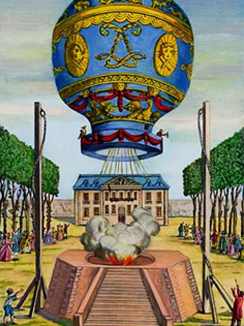 Teenagers may make impulsive allegations as a smokescreen for their own misconduct, or to seek attention. They may be reluctant to report it or even retract, but once it is in the system, they are trapped into compliance with the claim.
Teenagers may make impulsive allegations as a smokescreen for their own misconduct, or to seek attention. They may be reluctant to report it or even retract, but once it is in the system, they are trapped into compliance with the claim.
Revenge may also play a role. Domestic hostilities may fester over years. A person may feel they have been short-changed in life and seek to blame the person who they feel is prosperous. One only has to think of how family rows over inheritance can mushroom to see how easy it is for someone to become scapegoated.
Many changes have been made in the criminal justice system to support complainants and promote convictions over the past 25 years. As juries continue to acquit where they are unconvinced, the pressure increases to make evermore changes to ease conviction. Each time this happens the rights of defendants are potentially compromised, but because these reforms are piecemeal, the net effect goes unrecognised. As more people are convicted, it is assumed that all are being justly punished. But while more genuine cases may be successfully prosecuted, the danger of wrongful prosecution and conviction has also accelerated.
Hidden Trauma
Starting in the 1980s therapists and feminist activists popularised the idea that many adult social and psychological problems were caused by past sexual abuse. In many cases it was thought that the memory of this was hidden from the victim and needed to be ‘recovered’ from a deep-freeze memory bank.
Gradually the idea of one-track hidden cause of problems became widely assumed, and people began to ignore other potential factors and explanations in favour of past sexual trauma whether real, imagined or not remembered at all.
Fears of widespread sexual abuse of children led to pre-emptive action. The Cleveland and satanic abuse panics highlighted how professionals were overstepping the mark based on ideological conviction. Later the ‘recovered memory’ beliefs were found to be hollow with people induced to make up and belief false narratives.
But in the meantime the criminal justice system became more receptive to sexual offence allegations, with the police and prosecution less willing to test the reliability of complainants.
Conspiracies and cover-ups
The satanic abuse claims rested on the idea that there were hidden rings and networks of Satanists ritually abusing and sacrificing children. Subsequent research demonstrated that these were old superstitions lent fresh life through suggestive beliefs and techniques of social workers.
But strands of the beliefs survived and became hypothesised as networks of ‘organised abuse’. It was suggested that there were people in high places abusing children fed through linked chains of paedophiles. This idea became lodged in historic police investigations into abuse in children’s homes. Preceded by media publicity, large scale police operations ‘trawled’ former residents seeking complaints. Names of the suspects were put to people with compensation an incentive. There was also the injection of trauma theory; that victims may have forgotten abuse and that all manner of difficulties in life from alcohol and substance abuse to broken relationships could be attributed to a sexual abuse cause.
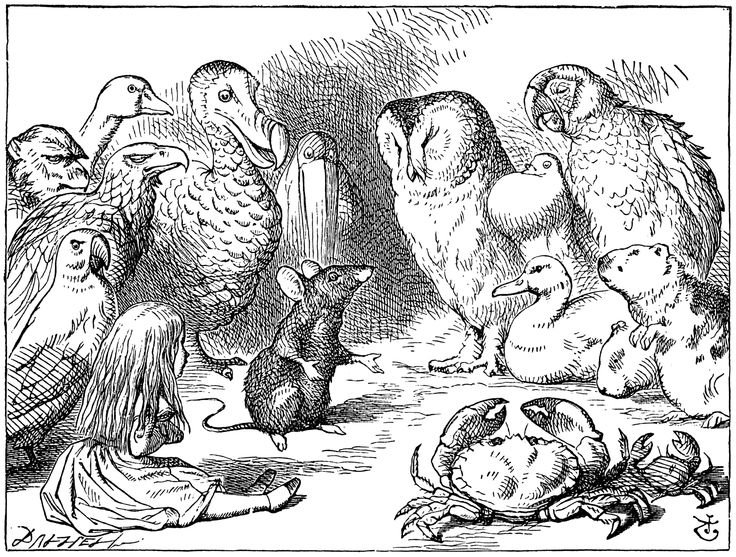 The cases often turned on ‘similar fact’ evidence. Cases in the higher courts had allowed for broad similarities in the evidence of one complainant to support another’s. While this might appear to be convincing, there was no guarantee the complaints were independent. Because of the assumed ‘memory gaps’ it was all too easy for investigators and others to inadvertently prompt and suggest evidence based on what they had heard from others.
The cases often turned on ‘similar fact’ evidence. Cases in the higher courts had allowed for broad similarities in the evidence of one complainant to support another’s. While this might appear to be convincing, there was no guarantee the complaints were independent. Because of the assumed ‘memory gaps’ it was all too easy for investigators and others to inadvertently prompt and suggest evidence based on what they had heard from others.
While genuine offences were uncovered, many more people were falsely accused and some convicted. The operations further laid the base for the growth of compensation litigation, with mass civil claims resulting in large settlements without trial.
But despite the mass trawls and the North Wales Waterhouse Tribunal of Inquiry, there were no networks or conspiracies uncovered. Alleged perpetrators were thought to be offending in isolation and there was no evidence of passing victims on to people in high places.
But the conspiracy theories did not die, they merely became dormant. In the meantime with trauma theory and compensation incentives gaining the ascendancy, historical prosecutions continued to mount, often to do with domestic disputes, throughout the nineties and beginning of the new century.
During this time the mandatory warning to juries as to the danger of convicting on uncorroborated evidence was abolished, the similar fact rules were replaced with statutory ‘bad character’ rules allowing for all allegations in a trial, and those not tried, to become mutually supportive. Video recorded evidence replaced the need for complainants to give their evidence in court, meaning that they did not need to demonstrate they remembered their evidence consistently. Trauma and memory directions by judges allowed for contradiction and inconsistency in evidence and the scope for expert evidence where there was a question of reliability and authenticity of claims became tightly restricted.
The Savile effect
The avalanche of claims about the deceased Jimmy Savile following a television expose in October 2012 revived conspiracy theories and claims of cover-ups. The launch of Operation Yewtree was posited on a ring of celebrities who abused and raped women and children with impunity. Before long the children’s home ring theories were being re-investigated and suggestions of cover-ups involving powerful elites including politicians and the defunct Paedophile Information Exchange were live issues.
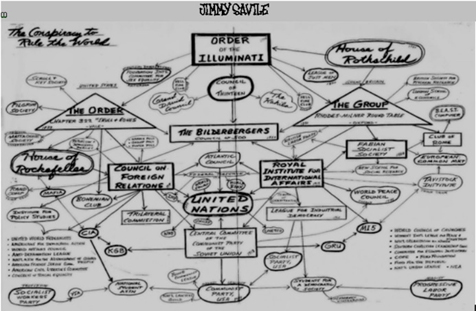
Much of this hysteria had been fermenting on the internet over the years and can be traced back to the satanic and network scares of 1980s. Just as in the pre-war Nazi and fascist period theories circulated about the world economic order being run by Bolsheviks and Jews causing the economic collapses that paralysed Germany, so too did theories of the world being run by an elite network of paedophiles in high places sating their lust for power on the innocent.
As inquiry after inquiry revisits the past with speculative retrospective allegations, distortions run riot. While it is certainly true that misconduct was often overlooked in the past, there is little substantive basis for widespread deliberate cover-ups and no evidence of systematic abusive networks in control.
But the upshot of the constant re-working of the past has resulted in more and more allegations being prosecuted with the prospect of further widespread injustice as innocent people are caught up in the net.
Grooming gangs
Over the last few years a new form of ring theory has arisen. Mostly centred on British Pakistanis, young girls have been found to be sexually exploited by older boys and men.
In some cases these offences are connected to drug-dealing and organised crime and there is no doubt that many girls, often in care with chaotic backgrounds, were sexually available for exploitation at an age when they should have been protected. However just how organised and extreme the exploitation was in individual cases is open to question.
With juries now told that inconsistencies and lies may be a product of trauma, there is a real danger that a false stereotype might emerge in the grooming cases, and with large numbers of victims being speculated in reports, significant injustice to defendants may result.
Appearance and Reality
Of course it is right that genuine sex offences are prosecuted and that complainants should be listened to. Real sex crimes can be horrifying and ought to be reported promptly to ensure reliable investigation and the safety of other potential victims. But it is all too easy for false allegations to be made, particularly about the distant past. Building a narrative based on details of the alleged acts can convey a superficially convincing picture devoid of the contextual anchors in reality, and it is this evidential hurdle that the defence has to overcome.
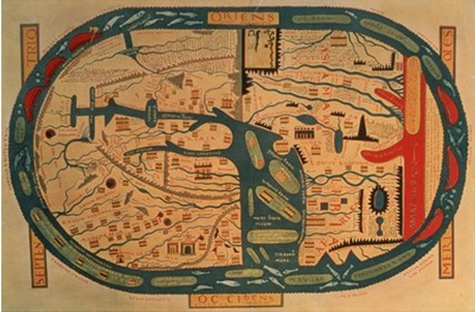
Causes and motives
Any allegation may be true or false, or partly true and partly false. Each case rests on its own facts, but barring forensic evidence, it may be that some of the worst examples, over the longest period of time are less likely to be true than minor assaults.

Sexual offences usually take place in private, but they are physical acts in space and time. In domestic cases where it may be alleged that offences took place against a child over a number of years without anyone knowing the question is how likely this is without suspicion or discovery?
Consider an analogous scenario. A husband or wife conducts an adulterous affair with someone living in the same house. Both parties are determined to keep it a secret. But suspicions arise. There is a noticeable tension between the two. Bedclothes reveal a telltale body smell, hairs or semen. Sooner rather than later the affair would be rumbled.
A child or adolescent who has been coerced would not have the same deliberation in keeping ‘the secret’ as an adult adulterer and soon suspicious signs would become apparent in behaviour and household routine. Child sexual abuse is a shocking and serious concern, more so than adultery, so the possibility of a total cover-up for years is unlikely.
There are all sorts of reasons for false allegations, some are just lies, though they may have gestated over a number of years and emerged piecemeal. Allegations are difficult to retract once made, though the accused may have no knowledge of the allegation until arrested.
Sometimes it’s not possible to discern a reason and motive for lying. It may simply have become adopted as someone’s identity from small beginnings as an attention-seeking gesture. At trial it is for the prosecution to prove guilt not the defence to prove innocence. But often it can seem as if the burden of proof is reversed with the complainant being believed unless there is a demonstrable counter explanation. Making sense of the landscape of allegations may therefore be a key task for the defence.
False Memory
The popular image of false or pseudo memory is of a hypnotherapist implanting an idea into the mind of a patient who is then fixated with a false belief. While this can happen the process is usually more subtle and more insidious.
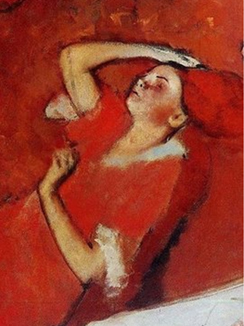
Many adults have lifestyle and psychosexual problems. They may suffer from more serious problems such as an eating disorder or addiction. It is natural to look for a cause in the past and wonder what childhood events might have poisoned their adult life.
Since the 1980s childhood sexual abuse has become a popular overarching explanation of problems. And because most people’s memories of childhood are fragmentary, with large gaps, it is all too easy to imagine a hidden history.
The claims about ‘recovered memory’ fuelled this tendency. It was said that the events were so traumatic that victims ‘repressed’ or ‘dissociated’ the memories, so that the victim has no conscious recollection of it happening. There is no scientific basis for this idea. While it is possible to forget many events because they were not significant, traumatic emotionally charged events live on in the memory all too clearly.
But the idea of repressed memory as a hidden cause satisfied many people’s desires for an explanation of current woes. And rather than having to address the messy mundane reality of growing up and the here and now, they could take cover in the status of being the victim of an obscene narrative.
Many things can contribute to a ‘false memory’ narrative. In general the first stage is the belief in a hidden memory as a cause of problems. Although this may be suggested in therapy, there are many pointers to the belief in popular culture. Misery memoires are prevalent template: an adult, often pseudonymous, retails their life story of abject misery and abuse, with italicised sections for ‘flashbacks’ reliving the abuse in adulthood in the present tense. The thicket of suffering leaves its imprint on the detritus of adult life until a therapeutic resurrection delivers a happy, prosperous and well-adjusted survivor.
The ‘mislit’ image sanctifies victimhood and also acts as a smokescreen, absolving the victim from personal responsibility for faults and misconduct. Whatever their failings, sexual abuse is to blame. In this way there can be a perverse incentive to create an imaginary history of abuse.
The ‘false memory’ narrative may not be easy to distinguish from a fabricated or true history. Many false or mistaken complainants will say they have always remembered the abuse, but may have convinced themselves of this as part of an evolving narrative. For instance, they may say it was ‘locked in their brain’ but latterly interpret this as being remembered all along. They see the alleged unconscious hypothetical ‘memory’ which was actually only pieced together in adulthood as a form on continuous memory.
Terms such as ‘flashbacks’ ‘body memories’ ‘triggers’ ‘blocked out’ are frequent indicators of pseudo narrative construction. As the belief takes hold, mental images may come to the fore; there may be vivid dreams and nightmares; books, movies and objects may give rise to strong sensations. Interpreting these markers as clues to a hidden history, a story comes to life.
Although the ‘remembering’ is said to be therapeutic, people who succumb to intense narrative construction tend to become more obsessed and divorced from reality. Many of the problems they thought they had solved are exacerbated. It is often an exasperated partner or friend who steers the matter towards a police report, sometimes decades after the alleged offences and maybe years after the narrative had taken hold.
In some cases where there is overt evidence of recovered and false memory, expert opinion may be relevant. But the courts are very restrictive as to when this is admissible. Therapy notes and diaries may provide relevant evidence where available.
Folie a deux and emotional contagion
It might be thought unlikely that two or more people would make complaints against the same person unless there was some truth. But in fact emotional suggestion can be a powerful influence.

Folie a deux describes a psychiatric condition where one person’s delusional belief is transferred to another. A sister who suddenly retails memories of sexual abuse may cause the other to experience a similar mental image, with each sister reinforcing the other with new ‘memories’.
Emotional contagion may exert a similar effect. Hearing of someone else being abused may focus a person’s mind on the same possibility in their own circumstances, giving rise to a false complaint.
Forms of second or third party contamination, perhaps through police enquiries, may explain how the same defendant can be accused by multiple complainants without active collusion. Such complaints may not be truly independent but subject to mutually reinforcing influences.
Once a person has been demonized, there may be a tendency for others to join in. This is a phenomenon known as ‘stereotype induction’. This may be a significant factor in multiple institutional cases where allegations against people are publicised in the media or on the internet or through direct contact in police investigations.
Institutional complaints
Children living in boarding schools or care homes share rumours and frequently malign staff. Perceived favouritism may give rise to sexual connotations and before long ‘everybody knows’ that that a particular member of staff has an evil eye for a pupil though there may be no evidence of this at all. In some cases there may be substance to rumour, but the idle belief in such conduct may also be a potent source of false allegations, particularly in a historical context.
When police conduct retrospective investigations into schools and care homes, old rumours may cement into concrete allegations with the same person being accused by multiple complainants.
Suspect names may already be in circulation through individual groups in contact, through media publicity or the internet.
Compensation may be a strong incentive, with mass civil claims bundled against the authorities running the home or school.
Claims of abuse also fit in with the trauma theories. Many ex-care home residents have had a damaged childhood prior to being in care and may go on to having difficult adult lives, including alcohol, drugs and criminal offences. To attribute these problems to institutional abuse where there is a potentially significant financial reward may be an easy source of temptation.
Parental alienation
Young children can be easily manipulated by the ingrained hostility of a resident parent towards an ex-partner. Contact and financial disputes may give rise to allegations of poor childcare or even misconduct by the other parent in a bid to limit access. Sometimes these include sexual abuse with the child prompted to say something incriminating.
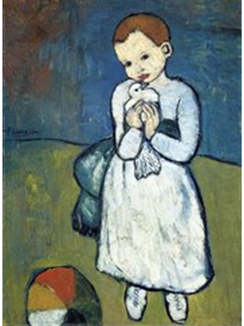
The child’s behaviour and emotional stability may deteriorate as a result of undue pressure, but the parent may view this as being an effect of the alleged abuse. If social services become involved, the true picture may not be recognised with the child believed to be abused by the non-resident parent.
Sometimes these allegations go no further than the family courts, and indeed may be unravelled there. Occasionally though they become police investigations and prosecutions.
By this time it may be several years since the non-resident parent has had contact with the child. Genuine memories of the child may be hard to come by, while the resident parent’s influence dictates conformity in police interviews.
A variant of this form of suggestion may be the revived complaint. Although the subject of the alleged abuse may recede through time, the adult child may recall the subject and believe they were abused, gaining support from the resident parent.
Such cases usually turn on the disposition and personality of the parent inducing the allegations, with the initial records key to the defence.
The one-night stand
 Two people end up in bed after a night out. They part the next day amicably.
Two people end up in bed after a night out. They part the next day amicably.
Sometime later the man is arrested on an accusation of rape. It may be said that the man took advantage of the woman when drunk, or even that there was no recall of events but a presumption of coercion. Having sex with a partner who is unconscious or asleep through drink vitiates consent if there is a complaint, but what if they were awake and consenting at the time? Drunken consent is a valid defence, but it may be compromised if the person was barely conscious. On the other hand disinhibited behaviour through alcohol is common and sometimes people can act in ways that they are fully conscious of at the time and then forget what they were doing and agreeing to. Hence they may think they would not have consented when they did and may have initiated the sex. Circumstantial evidence may be vital in such cases, including CCTV.
Have you been the victim of a false allegation? If so, please contact us to see if we can help.
